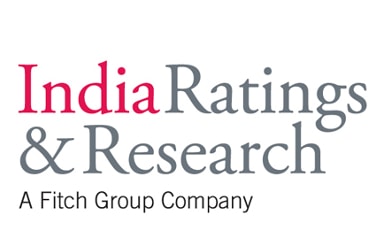
Indian banks will require INR 91,000 crore in tier-1 capital till March 2019 to sustain a minimum annual growth rate of 8-9 percent, according to a report by India Ratings and Research (Ind-Ra).
This includes INR 20,000 crore of residual tranches from the government's capital infusion in public sector banks under the under 'Indradhanush' programme.
There is an increasing divide between the large and smaller PSBs, with the former having some access to growth capital, better market valuation, and also some non-core assets to divest.
The latter would only receive bailout capital if required.
The long tail of credit costs is expected to subdue profitability of domestic banks despite plateauing their stressed assets.
Ind-Ra has maintained a stable rating and sector outlook on private sector banks and large PSBs while it has retained the negative sector outlook for small, mid-sized state-owned banks for 2017-18.
It expects large PSBs with better access to capital and private sector banks with their robust capitalisation to navigate another year of low growth and rising credit costs with a stable outlook.
The agency had retained its negative outlook on mid-sized and smaller PSBs with weak capitalisation and large stock of ageing non-performing loans (NPLs).
These banks will find it increasingly difficult to grow given increasing capital requirements and large funding gaps impeding their ability to compete on spreads as per Ind-Ra.
According to Ind-Ra's sector-wise stress analysis, sectors such as iron and steel and textiles have seen recognition but provisioning might still not be enough to protect against eventual loss given defaults.
Significant proportion of unrecognised stress pertains to sectors such as infrastructure, realty and capital goods which potentially have long-term viable assets.
These would increasingly need cash flow restructuring to avoid slippages.
NPLs: Know More- A nonperforming loan (NPL) refers to a sum of borrowed money upon which the debtor has not made his scheduled payments for at least 90 days.
- A nonperforming loan is either in default/close to being in default.
- Once a loan is nonperforming, the odds that it will be repaid in full are considered to be low.